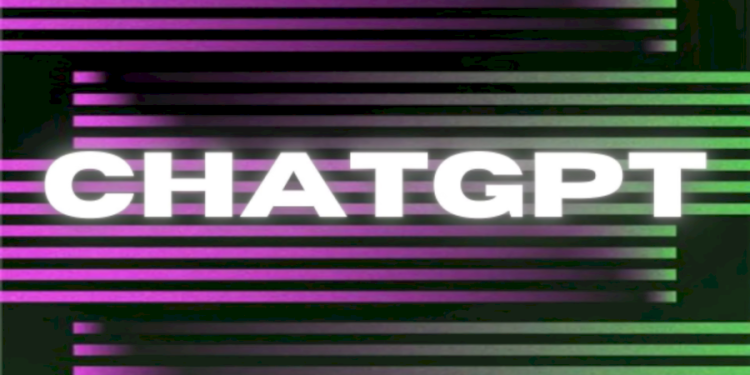This past week saw the release of GPT-4o, or “o” for “omni,” a new iteration of the artificial intelligence (AI) system that powers the well-known ChatGPT chatbot from OpenAI. GPT-4o is positioned as a first step toward more organic AI interaction. The demo video claims that it can have spoken interactions with users very instantly and that it has a personality and mannerism similar to that of a human.
There will probably be disagreements over this emphasis on personality. GPT-4o comes out as affable, sympathetic, and interesting in OpenAI’s demos. It chuckles, flirts, tells “spontaneous” jokes, and even sings. The AI system also demonstrates its ability to react to users’ emotional tones and body language.
OpenAI’s latest ChatGPT chatbot, which debuted with a simplified interface, seems to be intended to boost user engagement and make it easier for developers to create new apps using its text, image, and voice capabilities.
Another advancement in AI development is GPT-4o. The emphasis on personality and engagement, however, raises significant concerns about whether this will actually serve user interests and the moral ramifications of developing AI that can mimic human emotions and behaviors.
The element of personality
GPT-4o is envisioned by OpenAI as a more entertaining and interesting conversational AI. This has the potential to improve user satisfaction and the effectiveness of interactions.
Research indicates that when chatbots demonstrate social intelligence and personality qualities, users are more inclined to trust and collaborate with them. This may be important in industries like education, where research suggests AI chatbots might improve motivation and learning outcomes.
Some analysts, however, are concerned that people could grow unduly attached to AI systems that have human-like personalities or that the one-way nature of human-computer contact could cause emotional harm.
The impact of Her
GPT-4o quickly sparked analogies to the 2013 science fiction film Her, which vividly depicts the possible dangers of human-AI contact. One such connection came from OpenAI CEO Sam Altman.
The protagonist of the film, Theodore, develops a strong bond and fascination with Samantha, an AI system possessing a clever and charming disposition. Their relationship raises concerns about the nature of intimacy and love as well as the importance of human-AI interaction by obfuscating the boundaries between the actual and virtual worlds.
Although GPT-4o and Samantha shouldn’t be compared too closely, there are some similarities. AI partners are already available. Users run the risk of developing strong emotional ties as AI gets better at simulating human emotions and behaviors. This might result in abuse, manipulation, and over-reliance.
Although OpenAI seems concerned about making sure its AI tools operate securely and are used responsibly, we still don’t know the full consequences of releasing endearing AIs into the world. The goal of meeting human psychological needs is not directly addressed by current AI systems, and it is difficult to describe and quantify.
The remarkable capabilities of GPT-4o highlight the significance of having a framework or system in place to guarantee that AI tools are created and applied in a way that is consistent with the goals and values of the general public.
Increasing capacities
Moreover, GPT-4o may react in a conversational manner and process video—either recorded videos or footage of the user and their surroundings taken with the device camera. GPT-4o recognizes text, objects, and animals, makes comments about the user’s surroundings and attire, and responds to facial expressions in OpenAI’s demonstrations.
Similar features can be found in Google’s Project Astra AI helper, which was introduced the day following GPT-4o. In one of Google’s promotional videos, it assists a user in finding her spectacles in a crowded office, despite the fact that the AI is not yet able to see them. This suggests that it may also have visual memory.
The trend toward increasingly “multimodal” models—those that can handle text, graphics, audio, and video—is maintained by GPT-4o and Astra. The previous version of GPT-4o, GPT-4 Turbo, can handle images and text simultaneously, but not audio and video. Less than two years ago, ChatGPT’s initial version relied solely on text.
Additionally, GPT-4o is much faster than its predecessor.
Real-time collaboration spanning voice, visual, and text is thought to be essential for creating sophisticated artificial intelligence (AI) systems that can comprehend their surroundings and accomplish intricate and significant tasks.
However, some detractors contend that GPT-4o’s text skills are only marginally superior to those of GPT-4 Turbo and rival products like Claude 3 Opus from Anthropic and Google’s Gemini Ultra.
Will large AI research facilities be able to maintain the current, swift rate of advancement by constructing larger and more complex models? Experts are debating this issue vigorously, and the result will define how the technology is used in the years to come.
Greater accessibility
The fact that the new AI system, unlike its GPT-4 family predecessors, is accessible to all users in the free edition of ChatGPT, subject to usage constraints, is a less conspicuous but nonetheless noteworthy component of GPT-4o’s launch.
This indicates that the GPT-3.5 AI system has been upgraded for millions of users globally to a more potent one with more features. GPT-4o is far more beneficial than GPT-3.5 for a variety of uses, including employment and education. With time, the effects of this evolution will become more noticeable.
What comes next?
After more than a year since the release of GPT-4, fans of ever-more-powerful AI systems were let down by OpenAI’s announcement of GPT-4o. They had thought that GPT-5 would soon be released.
Rather, the features that are being integrated into their products are highlighted by this week’s GPT-4o reveal and Google’s most recent AI announcements. These latest advancements suggest that users may be able to utilize more advanced virtual assistants that can do intricate activities with greater planning and interaction on their behalf.









